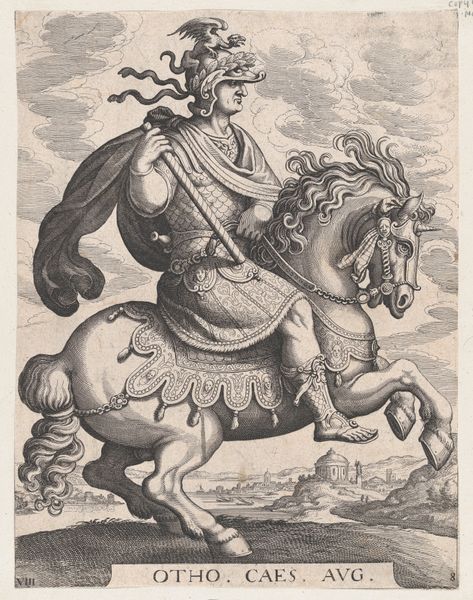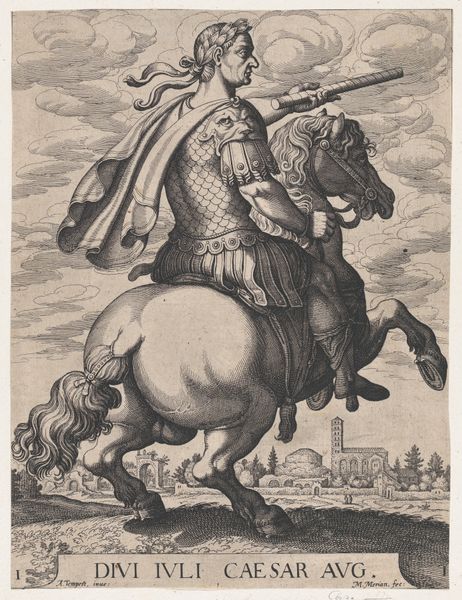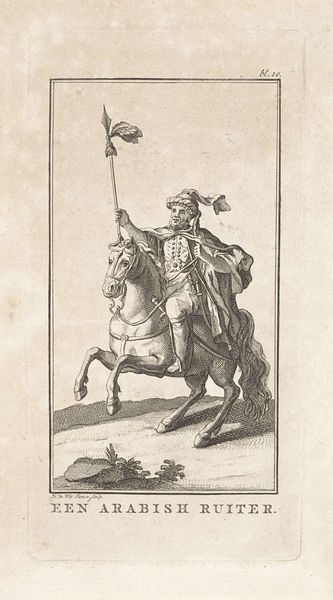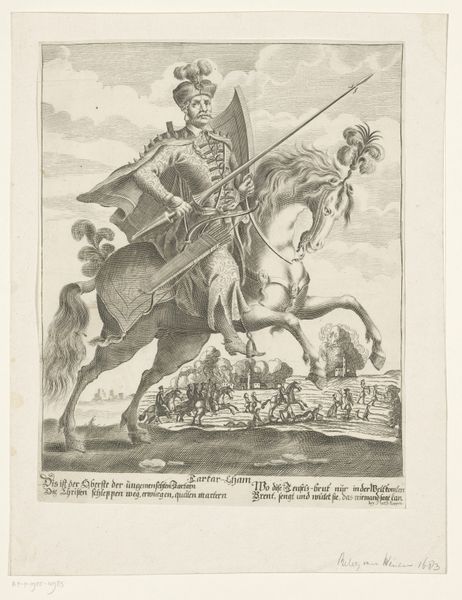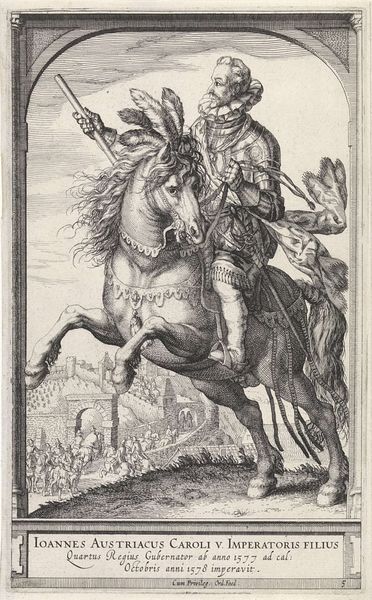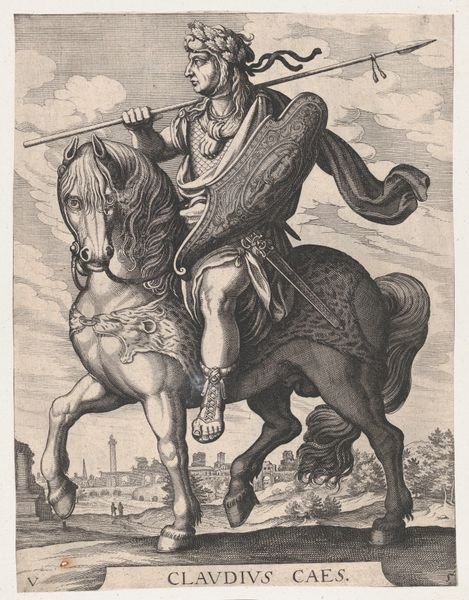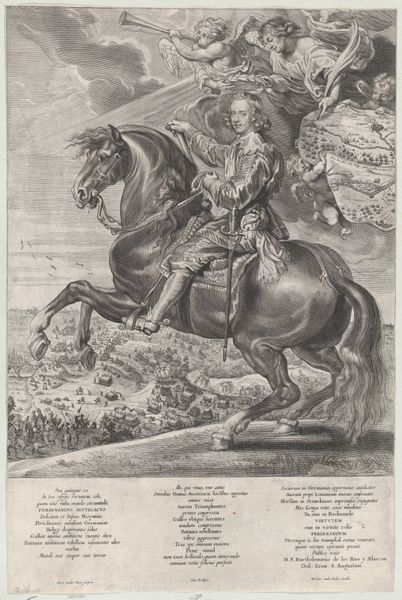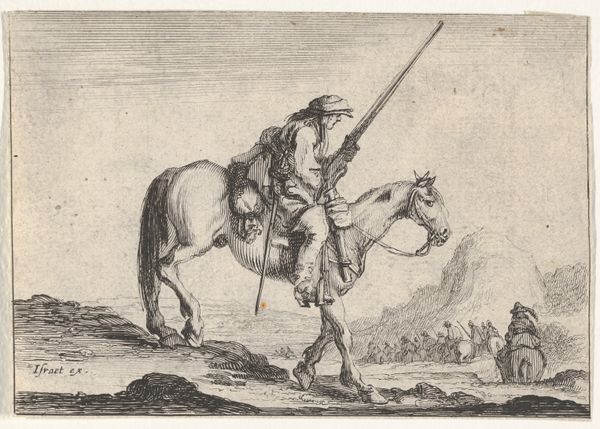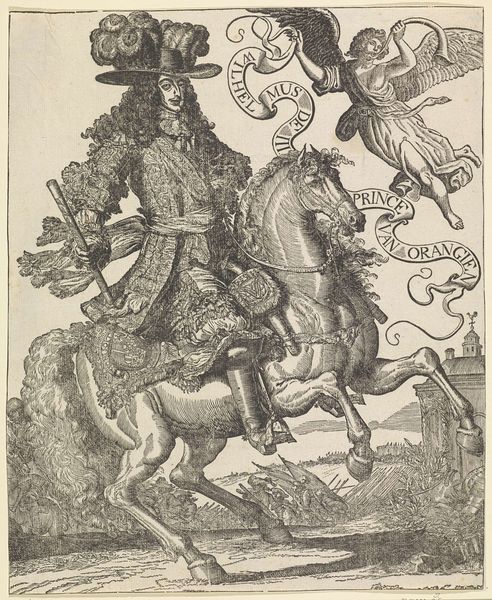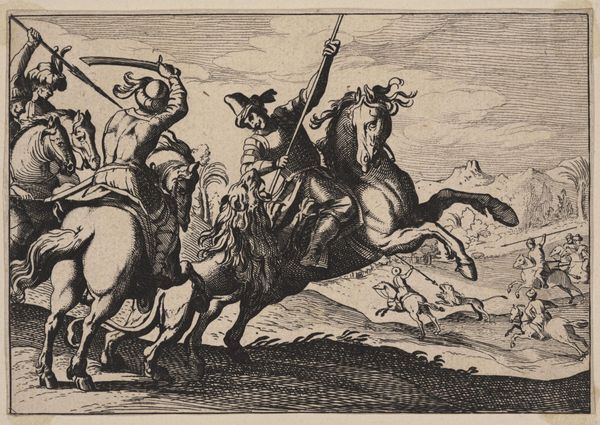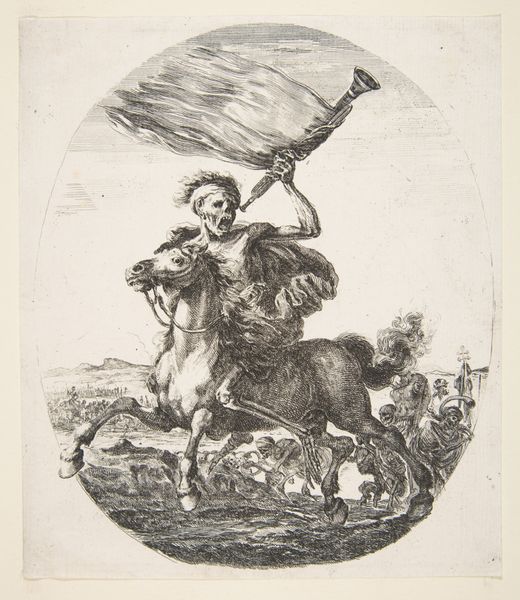
Vrouw op een paard, behangen met vissen en een visnet als vaandel met carnaval 1574 - 1641
0:00
0:00
engraving
#
baroque
#
figuration
#
genre-painting
#
engraving
Dimensions: height 317 mm, width 242 mm
Copyright: Rijks Museum: Open Domain
Curator: This engraving, currently residing at the Rijksmuseum, is entitled "Vrouw op een paard, behangen met vissen en een visnet als vaandel met carnaval"— or "Woman on a horse, decorated with fish and a fishing net as a banner at carnival." It's attributed to Anonymous and likely dates somewhere between 1574 and 1641. What's your initial reaction to this striking scene? Editor: What grabs me first is the overall strange festivity of the image. It’s not immediately clear what this is celebrating, but there’s a really exuberant, if slightly unsettling, atmosphere about it. The fish feel... almost symbolic? Curator: Indeed. The artwork appears amidst a complex history of festivals and social commentary during that era, and that fish certainly plays into it. Carnival, a time of revelry and role reversal, was often a stage for social critique. Here, the fish and fishing net become potent symbols. Editor: Right. The fish, universally associated with abundance and fertility. But here, weighed down, captured… It’s almost as if that abundance is being paraded, displayed in captivity as almost a kind of prisoner. The fishing net as a banner transforms from a tool of livelihood into a symbol of overreach, of exploitation. The rider has transformed her place in society using satire. Curator: Exactly! Consider the context of the Eighty Years' War. The Dutch relied heavily on fishing. This print, whether intentional or not, could easily symbolize that very dependence but on top of other societal concepts such as governance or perhaps social order at that time. Editor: The rider, adorned with sea creatures like some sort of bizarre, aquatic deity… The hat almost like a helmet of reversed fish bowl, perhaps symbolizing distorted societal functions? Curator: Precisely. This print likely offers an interesting insight into social tensions. And with her leading like this, you know its all meant to be taken with an intended hint of sardonic humor that was socially acceptable in some cultures at the time. Editor: Yes. Looking closer, I’m finding even more here than before, this symbolic language feels really complex as you move further and further into the image's contents and elements. Curator: Agreed. What initially presents as mere merriment quickly reveals layers of complexity, prompting us to reflect on the societal concerns of its time.
Comments
No comments
Be the first to comment and join the conversation on the ultimate creative platform.
